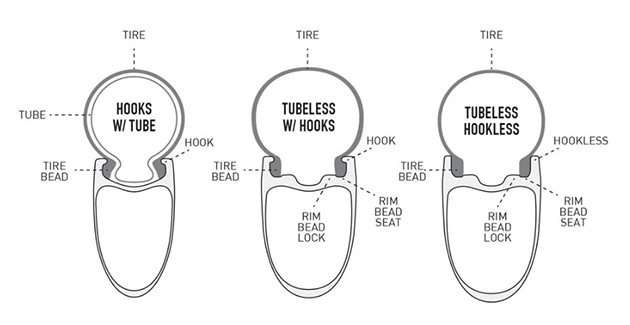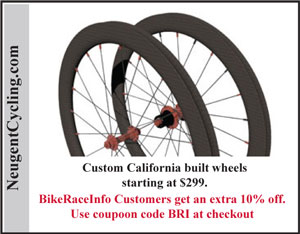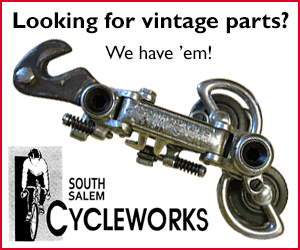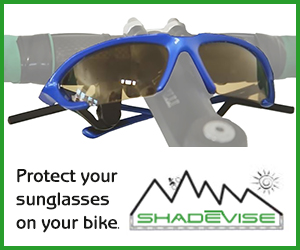

Advantages and disadvantages of hookless rims
by John Neugent
Tech articles | Commentary articles
John Neugent probably knows more about bicycle wheels than anyone else alive. Maybe more about bikes as well. He's spent his life in the bike business, at every level. He now owns Neugent Cycling, a firm devoted to delivering world-class equipment at the lowest possible price. If you are in the market for a set of wheels, please, check out John's site. He really knows his stuff. —Chairman Bill

John Neugent

Marcus Aurelius' Meditations is available in both Kindle eBook & audiobook versions. To get your copy, just click on the Amazon link on the right.
John Neugent writes:
I have been getting lots of inquiries for hookless gravel bike wheels. Although I have not put them on my website, I just got some carbon hookless in. YouTube has many videos about the danger of having a tire blow off the rims, but there are some excellent rim makers now using them. Since they don’t have a bead, you can see why there is some reason for this concern.
However, IF YOU USE A HOOKLESS SPECIFIC TIRE, there is no reason for concern. Road wheels have a bead seat diameter of 622 mm. A hookless specific tire will fit fine. Note, you still need to heed the maximum tire pressure.
Here’s the result of an AI search about them.
Hookless carbon bicycle rims are a newer technology with distinct advantages and disadvantages compared to traditional hooked rims.

Here is a set of explanatory cross-sections. Picture: ENVE Composites USA
Here's a summary:
Advantages of Hookless Rims
1. Weight Reduction: Hookless rims are lighter due to the absence of hooks, which reduces material usage.
2. Increased Strength: The manufacturing process allows for greater material density at the sidewalls, making them stronger and more resistant to impacts.
3. Improved Comfort: Hookless rims allow tires to sit slightly wider, increasing air volume and improving vibration absorption, which enhances comfort and potentially speed.
4. Ease of Installation: Tires are generally easier to install and remove on hookless rims.
5. Cost Efficiency in Production: Simpler manufacturing processes reduce production costs, though these savings are not always passed on to consumers.
Disadvantages of Hookless Rims
1. Limited Tire Compatibility: Hookless rims require specific tubeless tires, limiting the range of compatible options.
2. Lower Pressure Limits: Hookless rims typically have a maximum tire pressure limit (e.g., 70 psi for a 28 mm tire), which may not suit all riders or conditions.
3. Safety Concerns: The lack of a mechanical hook increases the risk of tire blow-offs if improperly sized or inflated beyond recommended pressures, especially on road bikes.
4. Marginal Performance Gains: Claimed aerodynamic and handling benefits are often minimal and comparable to hooked rims with similar dimensions.
5. Consumer Confusion: Riders must carefully research compatibility and standards, as not all manufacturers provide clear guidelines
Summary:
Hookless rims are best suited for riders prioritizing weight savings, strength, and comfort on gravel or low-pressure setups. However, they may not be ideal for those who value tire versatility, higher pressures, or added security from a mechanical hook.
John Neugent was was one of the first to establish quality hand building in Taiwan around the turn of the century. He now owns Neugent Cycling, a firm devoted to delivering world-class equipment at the lowest possible price.









